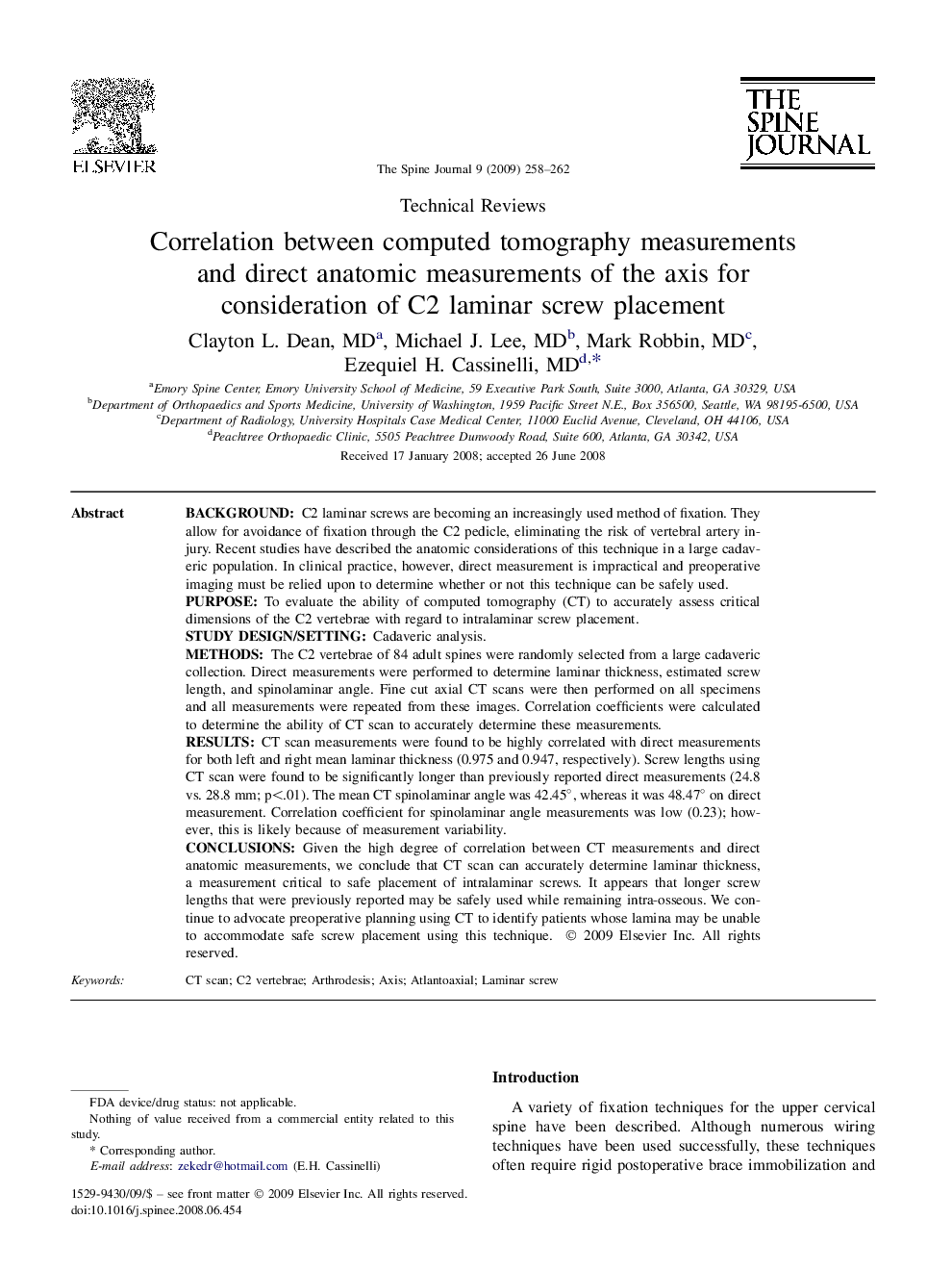| Article ID | Journal | Published Year | Pages | File Type |
|---|---|---|---|---|
| 4099683 | The Spine Journal | 2009 | 5 Pages |
BackgroundC2 laminar screws are becoming an increasingly used method of fixation. They allow for avoidance of fixation through the C2 pedicle, eliminating the risk of vertebral artery injury. Recent studies have described the anatomic considerations of this technique in a large cadaveric population. In clinical practice, however, direct measurement is impractical and preoperative imaging must be relied upon to determine whether or not this technique can be safely used.PurposeTo evaluate the ability of computed tomography (CT) to accurately assess critical dimensions of the C2 vertebrae with regard to intralaminar screw placement.Study design/settingCadaveric analysis.MethodsThe C2 vertebrae of 84 adult spines were randomly selected from a large cadaveric collection. Direct measurements were performed to determine laminar thickness, estimated screw length, and spinolaminar angle. Fine cut axial CT scans were then performed on all specimens and all measurements were repeated from these images. Correlation coefficients were calculated to determine the ability of CT scan to accurately determine these measurements.ResultsCT scan measurements were found to be highly correlated with direct measurements for both left and right mean laminar thickness (0.975 and 0.947, respectively). Screw lengths using CT scan were found to be significantly longer than previously reported direct measurements (24.8 vs. 28.8 mm; p<.01). The mean CT spinolaminar angle was 42.45°, whereas it was 48.47° on direct measurement. Correlation coefficient for spinolaminar angle measurements was low (0.23); however, this is likely because of measurement variability.ConclusionsGiven the high degree of correlation between CT measurements and direct anatomic measurements, we conclude that CT scan can accurately determine laminar thickness, a measurement critical to safe placement of intralaminar screws. It appears that longer screw lengths that were previously reported may be safely used while remaining intra-osseous. We continue to advocate preoperative planning using CT to identify patients whose lamina may be unable to accommodate safe screw placement using this technique.
